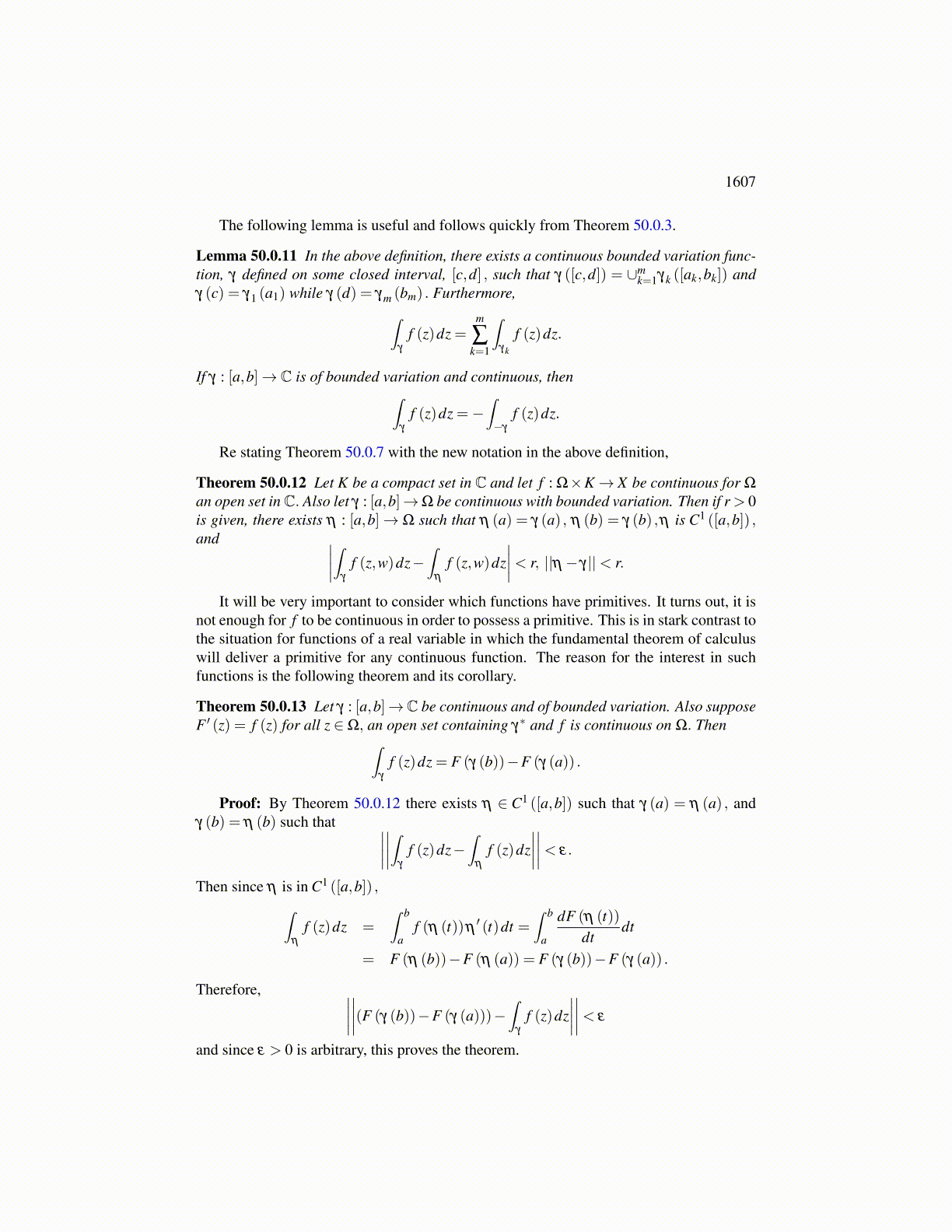
1607
for all h. Here S (P) is a Riemann Steiltjes sum of the form
n
∑i=1
f (γ (τ i) ,z)(γ (ti)− γ (ti−1))
and Sh (P) is a similar Riemann Steiltjes sum taken with respect to γh instead of γ. Becauseof 50.0.11 γh (t) has values in H ⊆ Ω. Therefore, fix the partition, P , and choose h smallenough that in addition to this, the following inequality is valid for all z ∈ K.
|S (P)−Sh (P)|< ε
3
This is possible because of 50.0.11 and the uniform continuity of f on H×K. It follows∣∣∣∣∣∣∣∣∫γ
f (·,z)dγ (t)−∫
γh
f (·,z)dγh (t)∣∣∣∣∣∣∣∣≤
∣∣∣∣∣∣∣∣∫γ
f (·,z)dγ (t)−S (P)
∣∣∣∣∣∣∣∣+ ||S (P)−Sh (P)||
+
∣∣∣∣∣∣∣∣Sh (P)−∫
γh
f (·,z)dγh (t)∣∣∣∣∣∣∣∣< ε.
Formula 50.0.10 follows from the lemma. This proves the theorem.Of course the same result is obtained without the explicit dependence of f on z.This is a very useful theorem because if γ is C1 ([a,b]) , it is easy to calculate
∫γ
f dγ
and the above theorem allows a reduction to the case where γ is C1. The next theoremshows how easy it is to compute these integrals in the case where γ is C1. First note that iff is continuous and γ ∈C1 ([a,b]) , then by Lemma 50.0.6 and the fundamental existencetheorem, Theorem 50.0.4,
∫γ
f dγ exists.
Theorem 50.0.9 If f : γ∗→ X is continuous and γ : [a,b]→ C is in C1 ([a,b]) , then∫γ
f dγ =∫ b
af (γ (t))γ
′ (t)dt. (50.0.12)
Proof: Let P be a partition of [a,b], P = {t0, · · · , tn} and ||P|| is small enough thatwhenever |t− s|< ||P|| ,
| f (γ (t))− f (γ (s))|< ε (50.0.13)
and ∣∣∣∣∣∣∣∣∣∣∫
γ
f dγ−n
∑j=1
f (γ (τ j))(γ (t j)− γ
(t j−1
))∣∣∣∣∣∣∣∣∣∣< ε.
Nown
∑j=1
f (γ (τ j))(γ (t j)− γ
(t j−1
))=∫ b
a
n
∑j=1
f (γ (τ j))X[t j−1,t j ] (s)γ′ (s)ds